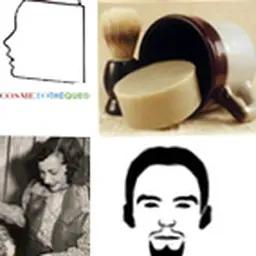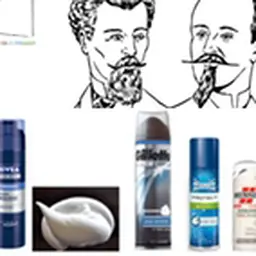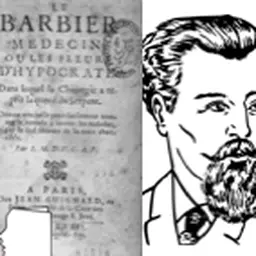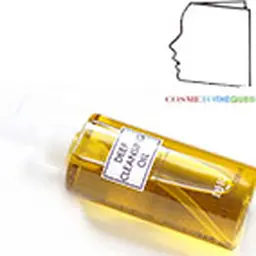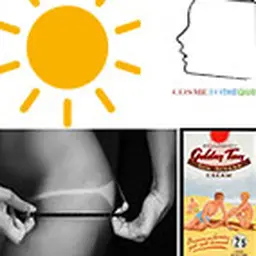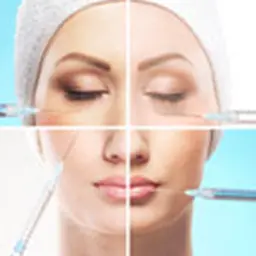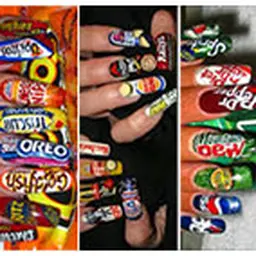
The practice of shaving is often, if not almost automatically, associated with the use of products that either facilitate or complement it, or take into account specific and particular problems. In this contribution, we will gradually see the different typologies of products used in these practices.
In order to allow an optimal cut during shaving, it is preferable to do it"hot". The warm water dilates the pores of the face, makes the skin more elastic and softens the hair. This makes shaving much easier and significantly reduces the risk of cuts. To do so, several means are possible. - Taking a shower is the simplest and most obvious solution: during it, washing your face with soap will remove the film of sebum that previously waterproofed it and will allow it to get wet. - You can also shave in the shower. Shaving devices in the shower are now available. - Other solutions consist in applying a cloth to the face having previously washed the face with soap for the reasons previously mentioned. This cloth can be a towel, like the ones used by barbers. It must be moist and warm in order to fully fulfil its function. - The last is to use a hot shaving product. Several devices or products have been proposed for this purpose. We will describe the main ones.
Beard soap
It's the easiest and fastest. It consists in using a classic beard soap with hot water. The foam is placed in a suitable bowl using warm water in which the badger is soaked.
Hot shaving cream
One particular type of instant shaving foam is worth mentioning although it is practically no longer on the market. These are devices for instantly preparing hot shaving foam. The principle consists in using a device with pockets allowing to separate two substances which react together at the time of the delivery to produce an exothermic reaction, i.e. generating heat. In the best known devices, the exothermic reaction is obtained from a reaction using hydrogen peroxide (hydrogen peroxide) which reacts with a reducer to produce heat. The reducing system is often based on sulphites, thiosulphates or thiourea. Other substances have been used but less widely. Microencapsulation of some reagents has been proposed. In practice, one of the reagents is contained in the formula, the other in a pouch inside the can, the two substances mixing extemporaneously in proportions given at the time of delivery. Among the most famous products is Gillette's"The Hot One" heated shaving foam, marketed in the 1970s on this principle.
Many questions are associated with this type of technology: compatibility with the reagents, in particular with the soap in the presence of reducer, corrosion of the cans, tingling sensation, skin irritation, proper functioning of the delivery system, failing which one or the other of the contents can be diffused without the desired effect, etc. Due to their complexity, and consequently their cost, these products have had limited success.
|
An example of a formula* of heated shaving foam |
|
|
Thiourea |
1,5 |
|
|
0,5 |
|
Triethanolamine |
8,2 |
|
|
7,5 |
|
|
0,9 |
|
|
1 |
|
|
3,2 |
|
Stearamide |
0,9 |
|
Water |
72,5 |
|
|
8,20 |
|
Phenacetin |
smear |
|
Water |
|
|
|
|
Other products will be presented on the same principle: US patent 3341418, 3585932, 3722752; Patent EP1776162 B1.
Foam generators
Intended for often professional use, several devices are used to manufacture foam extemporaneously for use. Among these, a whole series of systems are used to prepare hot foam. They are offered for professional use, more rarely at home. The principle consists in using a soapy solution of hot water that is filled with a special device just before application.
Home systems allow the use of common foams and/or shaving gels to achieve a comparable effect, but also soap and water solutions. Among the various systems, the following proposals will be retained: - Conair Shaving Cream Warmer HGL1: very versatile system using traditional products, foam or shaving gel ; - Conair HLM10 Hot Lather : Advanced version machine from this manufacturer for faster product heating, which can also be used with conventional products ; - Lather King Shaving Cream Warmer: a professional version but usable at home, which works with a solution of liquid soap and demineralized water.
In addition to this, there are also numerous projects for ingenious devices to heat products more or less, either by electricity or by complementary energy sources (Patents: DE2915277 A1, US6056160 A, US3990612 A). Here are some examples through dedicated patents.
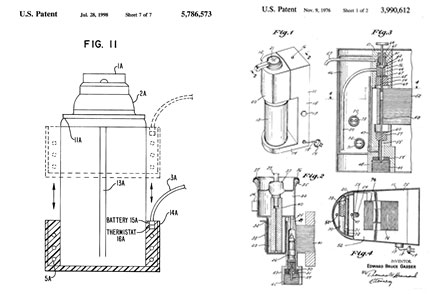
|
Contribution made by Jean Claude Le Joliff A biologist by training, Jean Claude Le Joliff has been an R&D man for many years. Successively in charge of R&D, then Research and Innovation in a large French cosmetics and luxury group, and after an experience of creating a research centre (CERIES), he turned to innovation management. He was also Associate Professor at the University of Versailles Saint Quentin (UVSQ) and remains a lecturer in several specialized courses: ISIPCA, IPIL, ITECH, UBS, UCO, SFC etc. He is the founder of inn2c, an R&D and Innovation consulting company. Consultant for several international companies, he has actively participated in projects such as Filorga, Aïny, Fareva, and many others. He created the Cosmétothèque®, the industry's first conservatory of crafts and know-how. |

